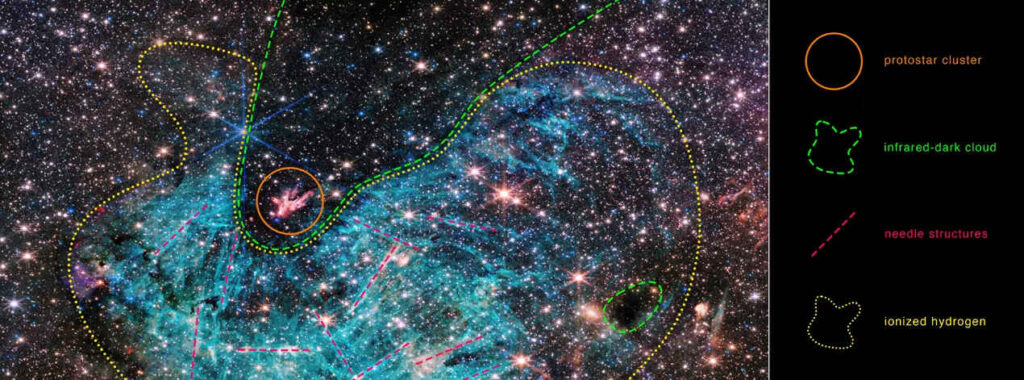The US space agency NASA has published a new image from the James Webb Space Telescope showing a region near the center of the Milky Way galaxy near a supermassive black hole.
The region is called Sagittarius C (Sgr C) because it sits within the constellation Sagittarius in Earth’s sky, but in reality it is about 25,000 light-years from Earth. The JWST’s image is the first time this region of space has been looked at using an infrared lens, which can detect wavelengths of light in a spectrum beyond what’s visible to humans.
Called a region of “chaotic space,” the area captured contains several as-yet-unidentified structures, as well as some familiar places such as a protostar cluster and a vast portion of ionized hydrogen gas.
The image contains an estimated 500,000 stars, according to NASA. The whole region is about 300 light-years away from Sagittarius A*, the supermassive black hole that sits at the centre of our galaxy.
“The galactic centre is a crowded, tumultuous place. There are turbulent, magnetized gas clouds that are forming stars, which then impact the surrounding gas with their outflowing winds, jets, and radiation,” explained co-investigator Rubén Fedriani, a postdoctoral research fellow at the Instituto Astrofísica de Andalucía in Spain, in a statement.
“Webb has provided us with a ton of data on this extreme environment, and we are just starting to dig into it.”
Alongside the raw image, NASA released a helpful guide to some of the strange phenomena it contains.
Officials note several objects of interest, including “needle-like structures” in the ionized gas that seem to have no uniform direction, and for which they have no explanation.

“Webb reveals an incredible amount of detail, allowing us to study star formation in this sort of environment in a way that wasn’t possible previously,” said Samuel Crowe, the principal investigator and an undergraduate student at the University of Virginia.
“The image from Webb is stunning, and the science we will get from it is even better,” Crowe said. “Massive stars are factories that produce heavy elements in their nuclear cores, so understanding them better is like learning the origin story of much of the universe.”
The space observatory was launched to distant Earth orbit in 2021, where it is afforded incredible views of the universe far from the intrusive lights of human civilization. It specializes in the infrared spectrum and is the most powerful telescope ever built, able to see back to within hundreds of millions of years after the Big Bang.
And this means what? Nice pictures, but I’m more interested in my human cells, how I can be healthier.
Fascinating, I’ve always loved this stuff.
Just imagine how far space exploration could have been today if we hadn’t spent the last 60 years paying taxes to international bankers to fund wars.